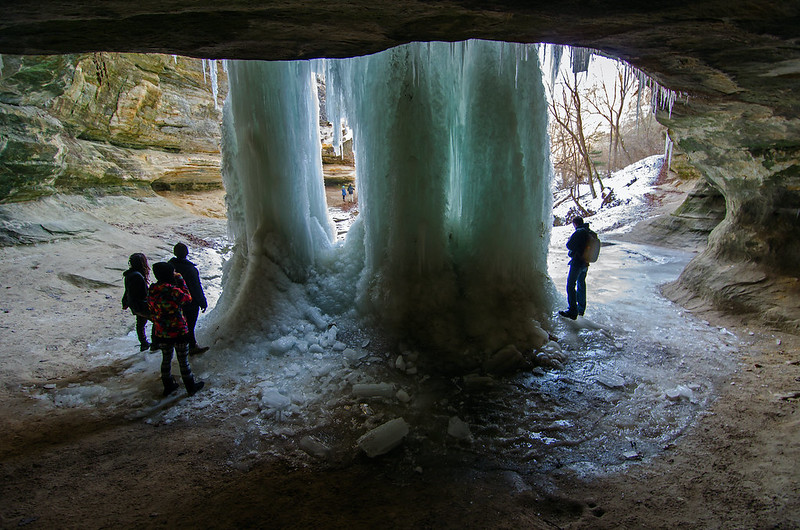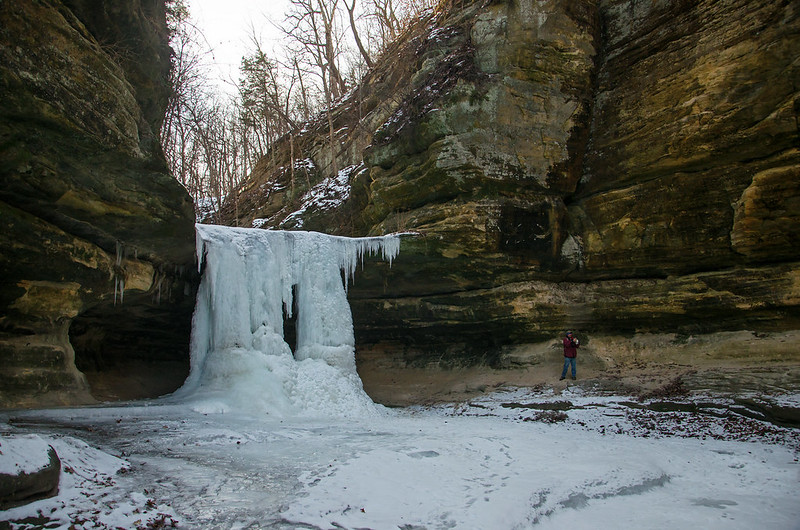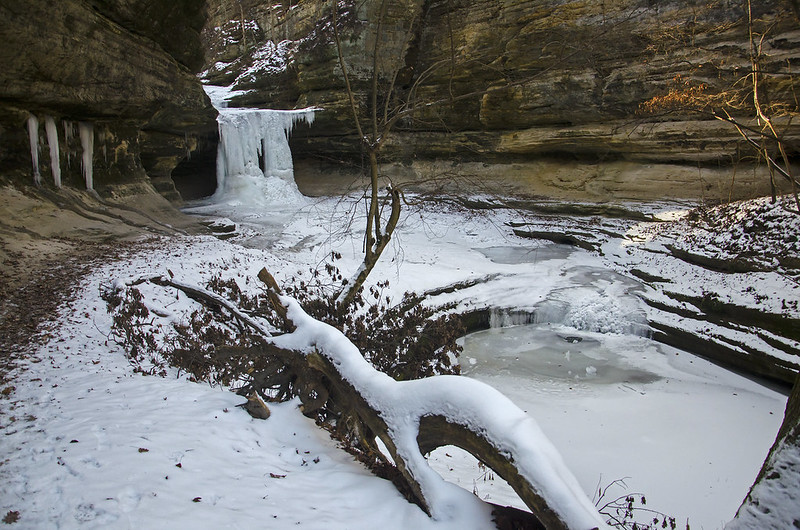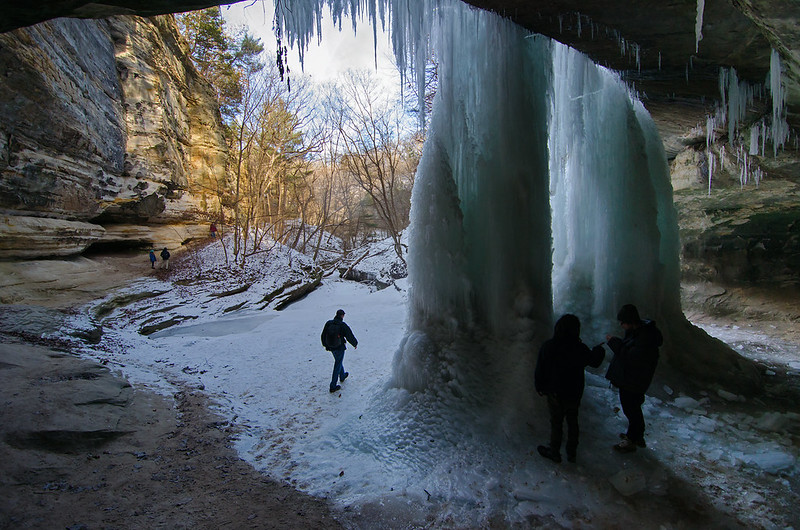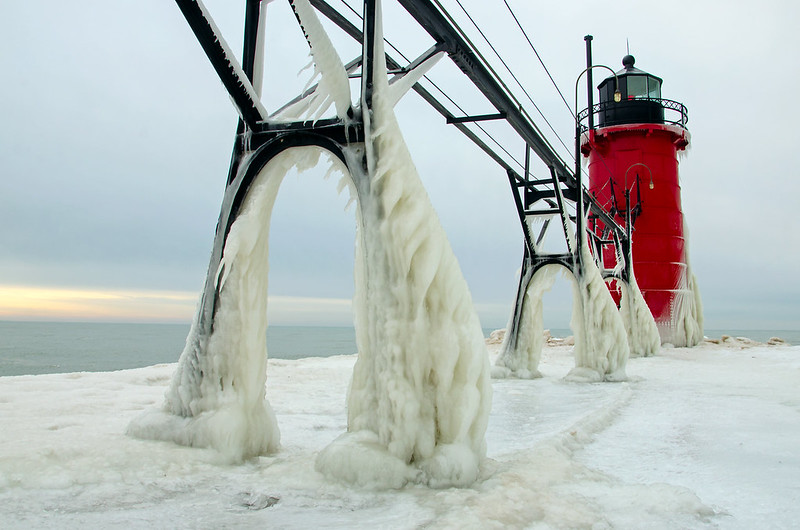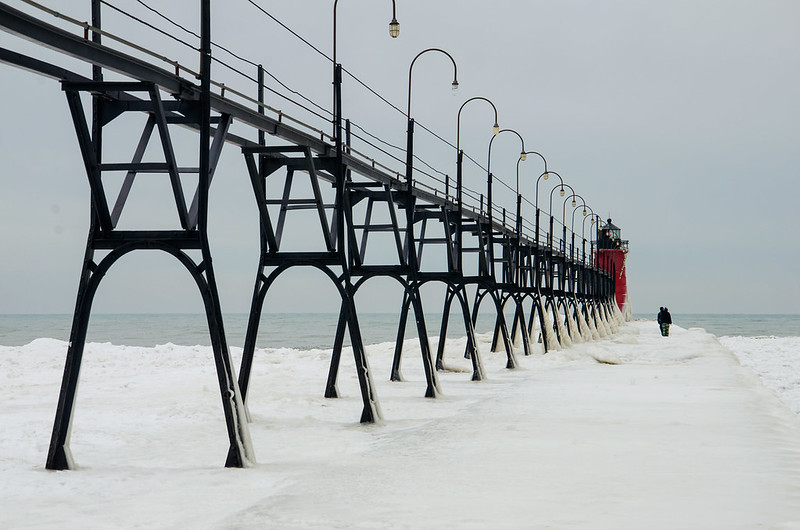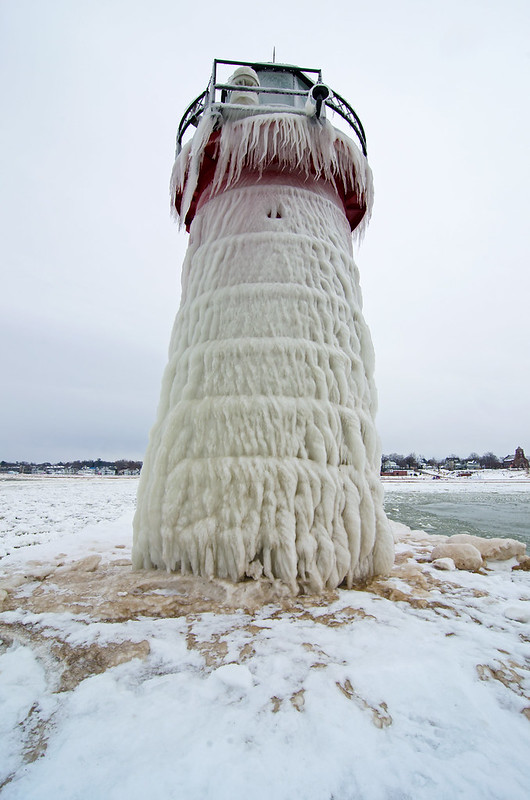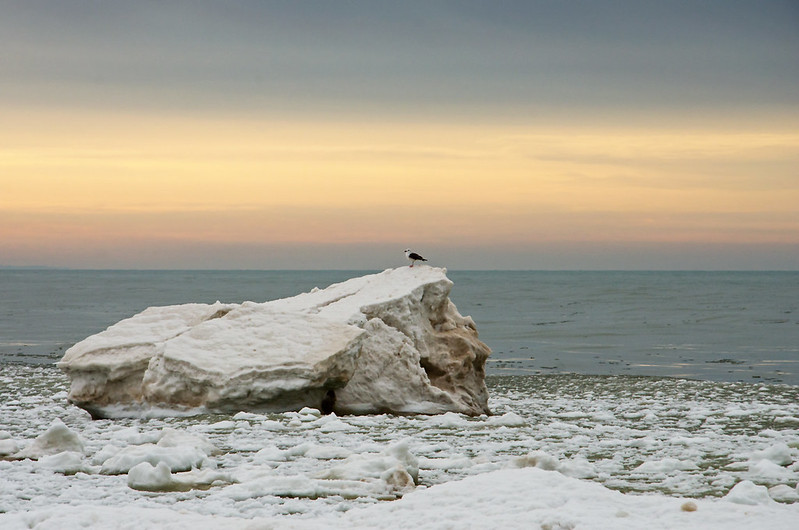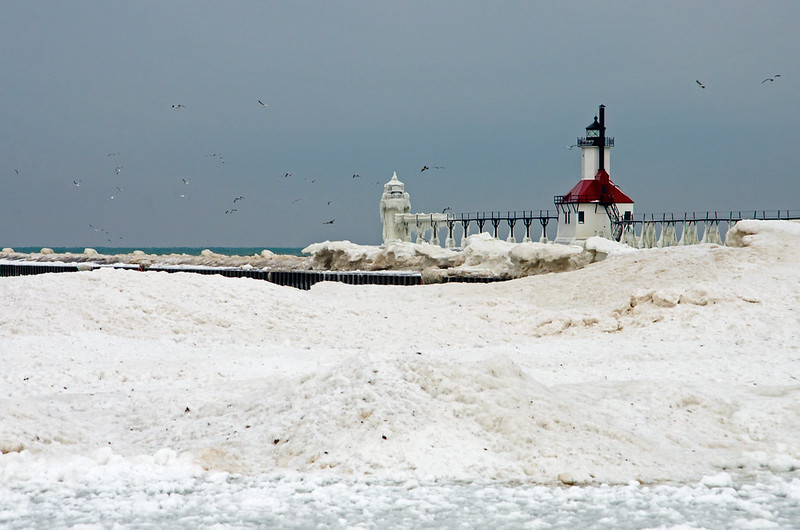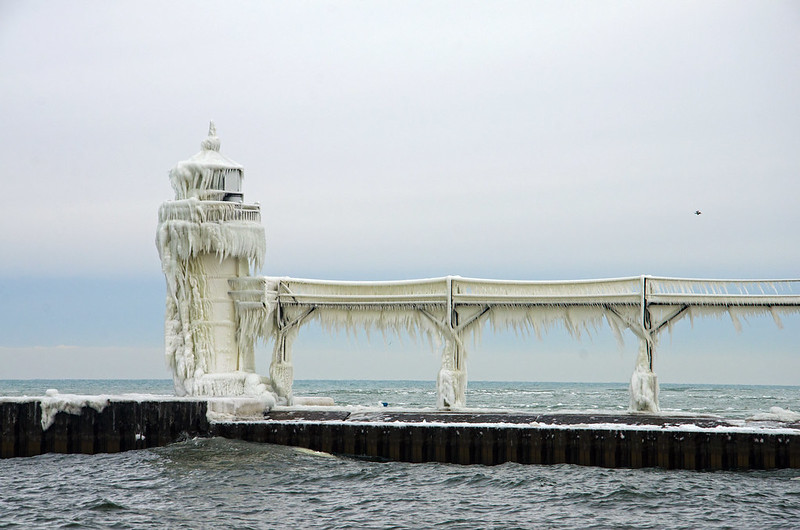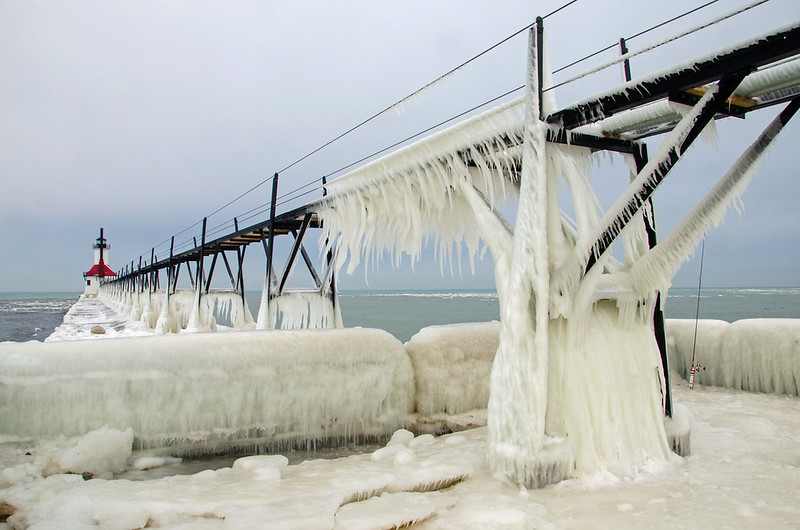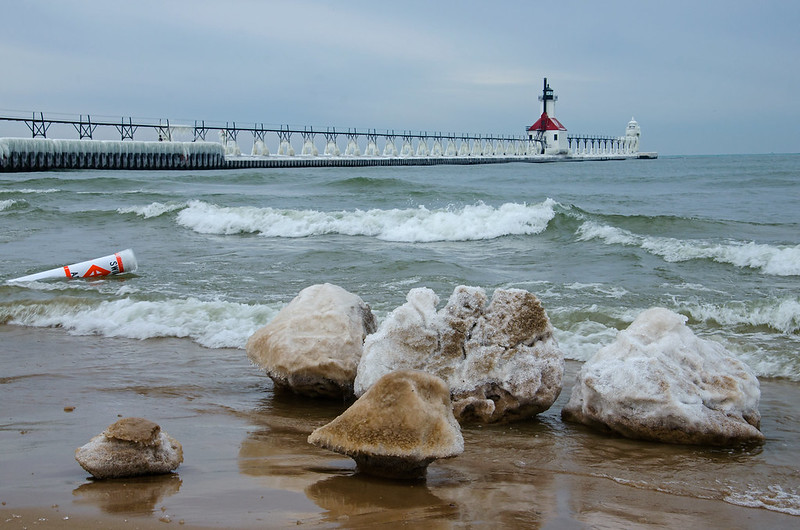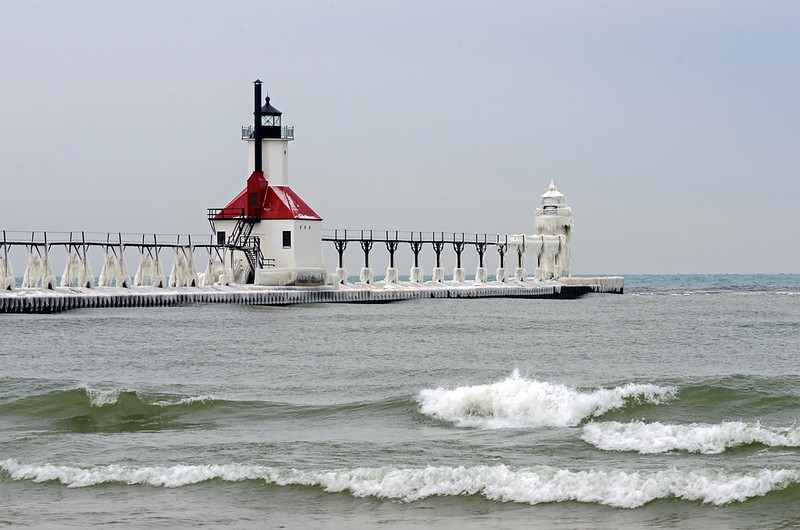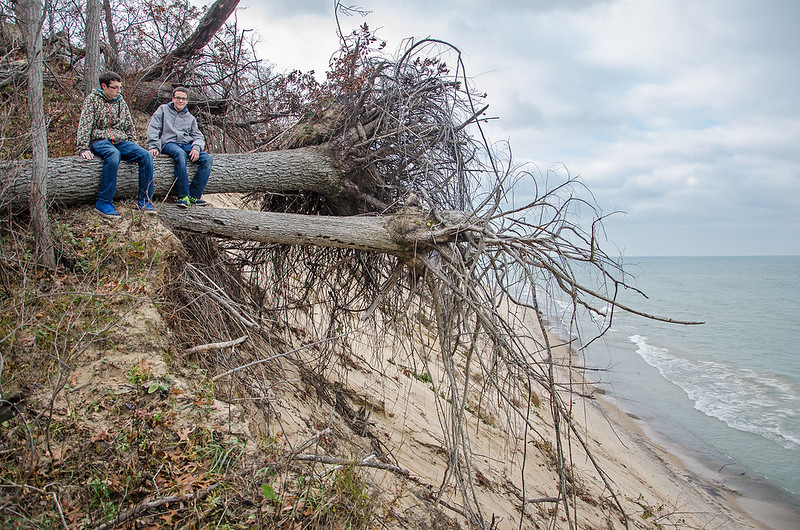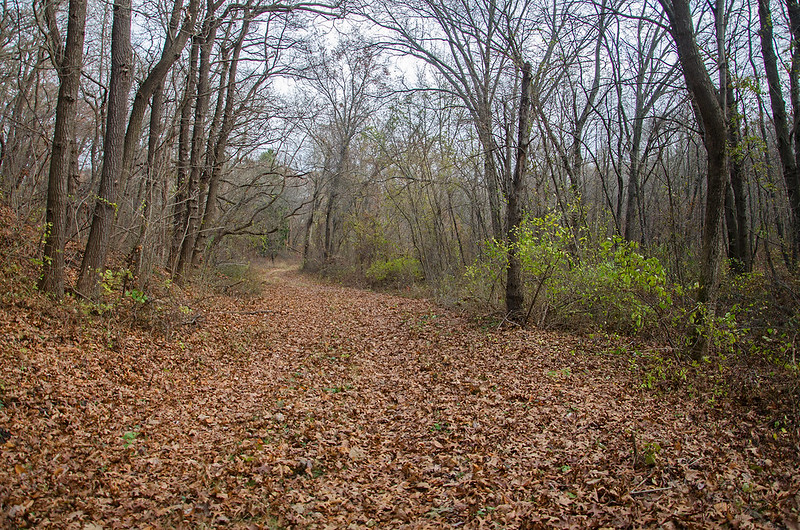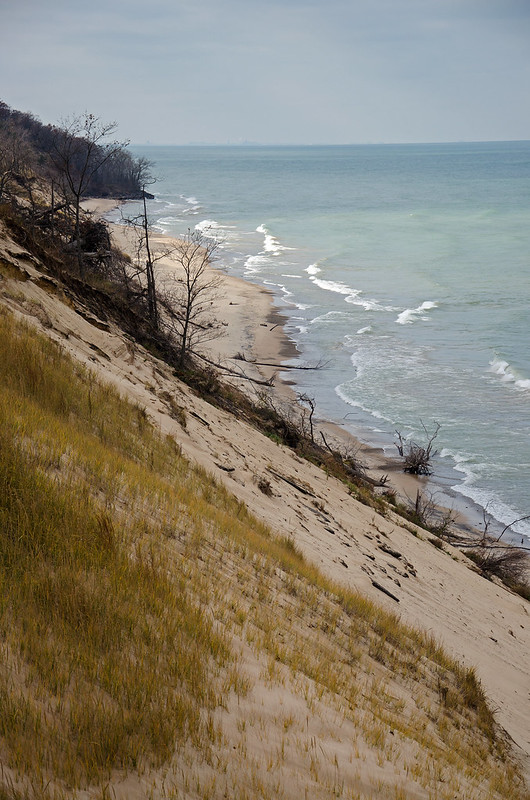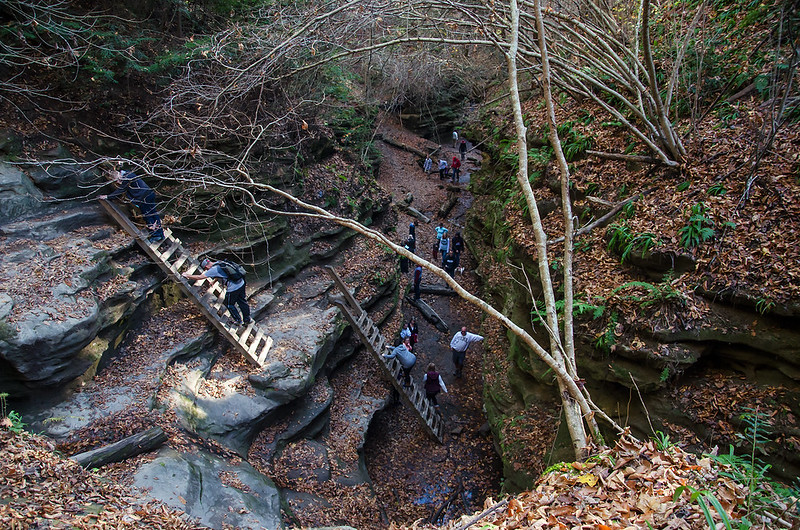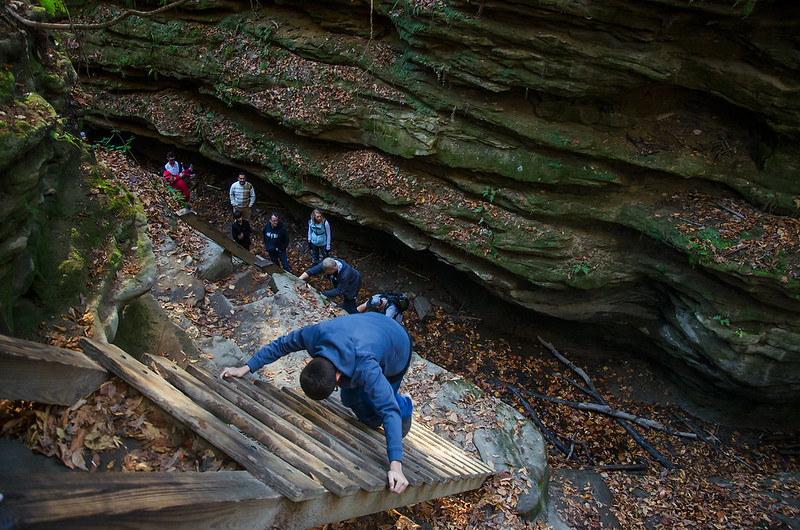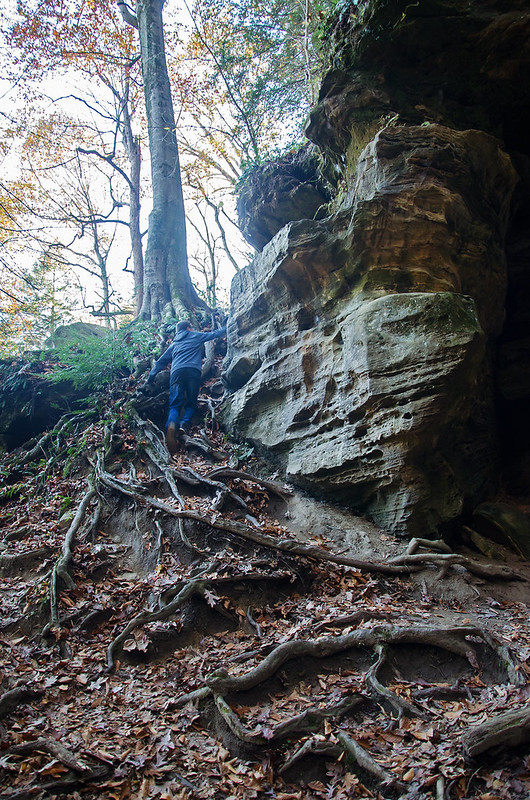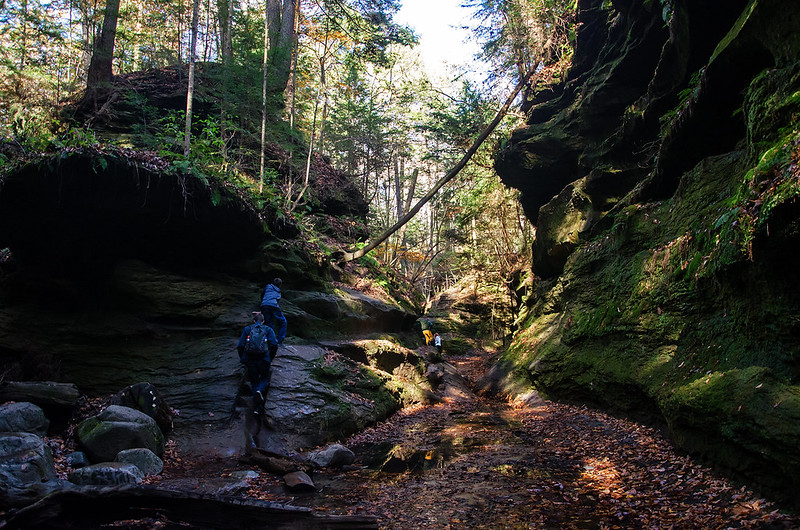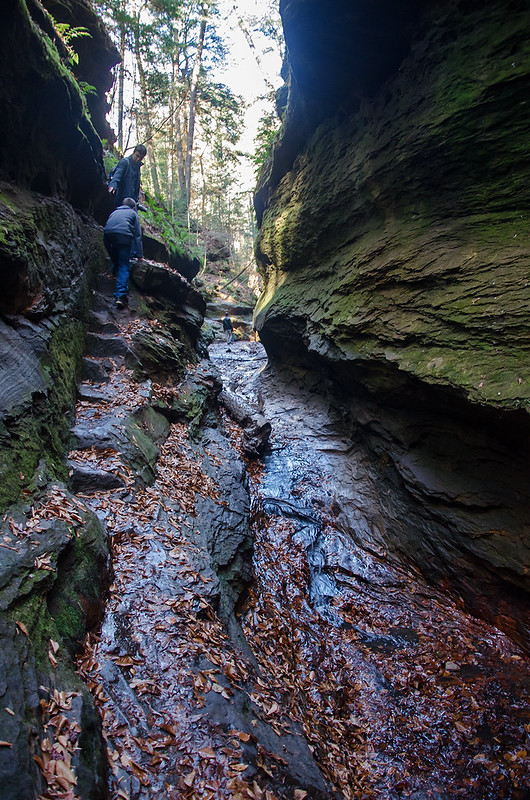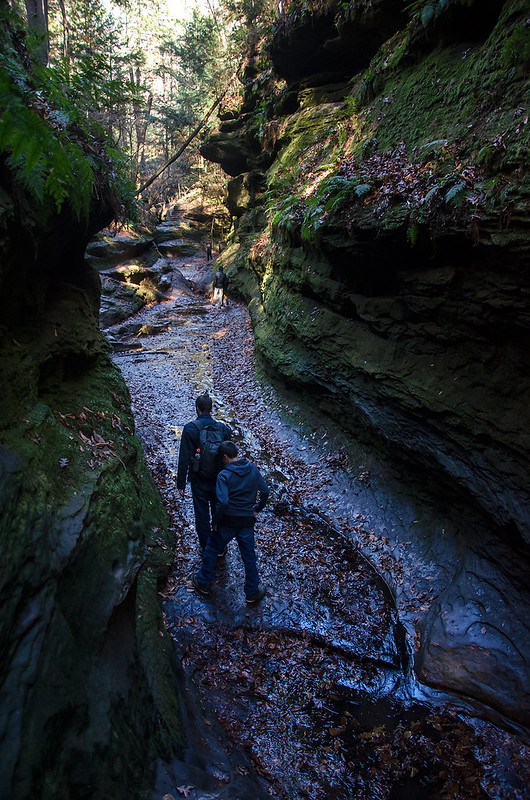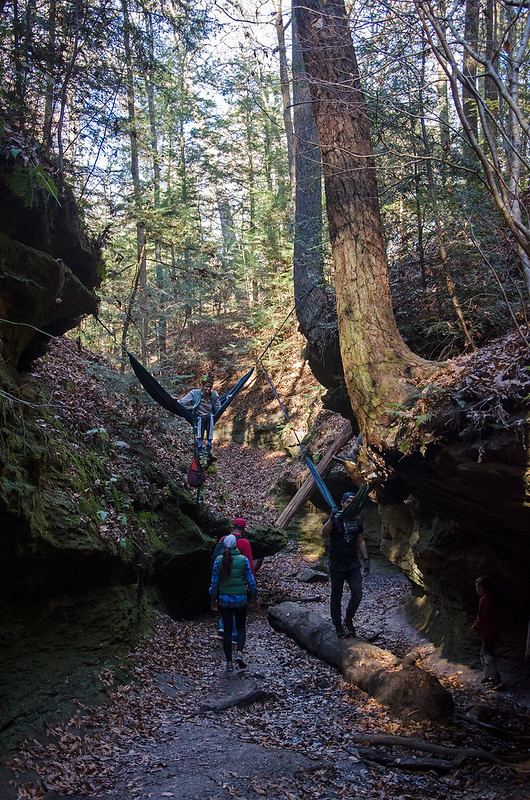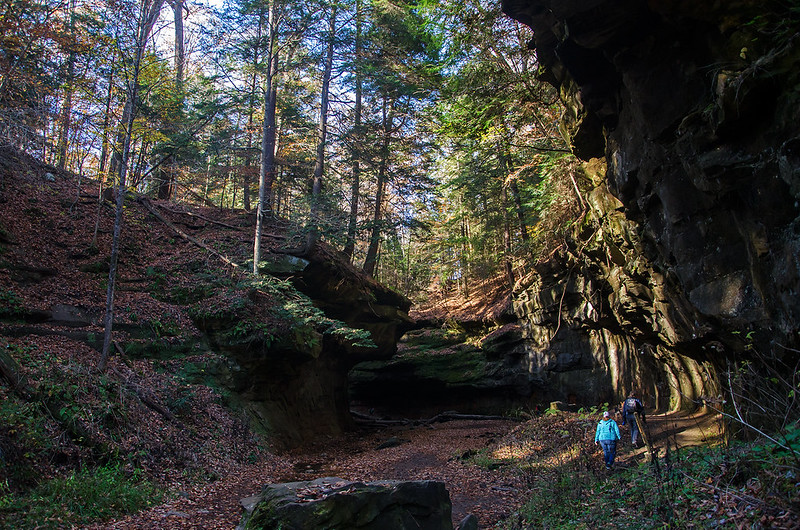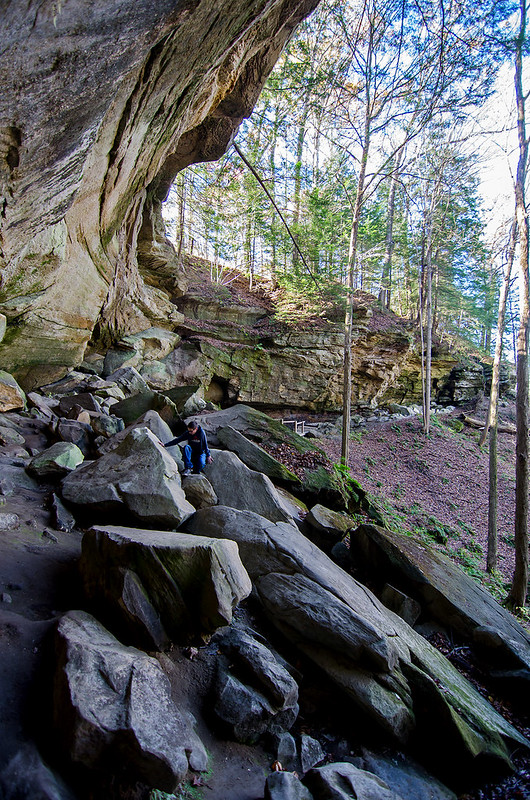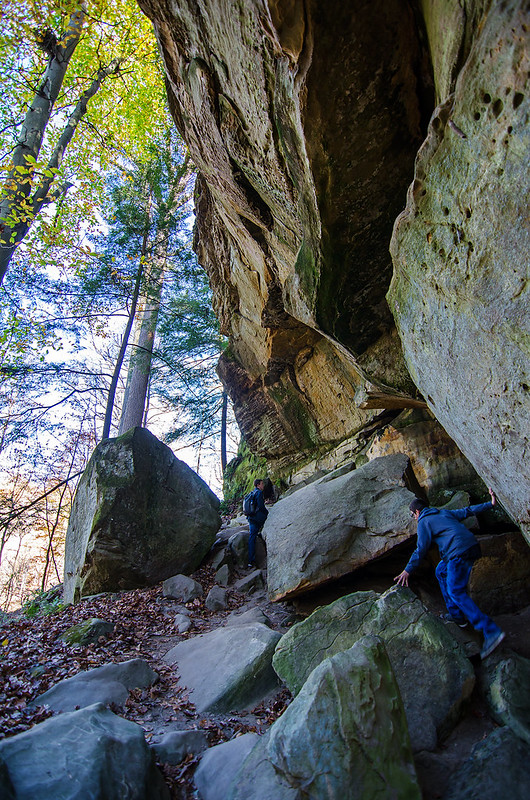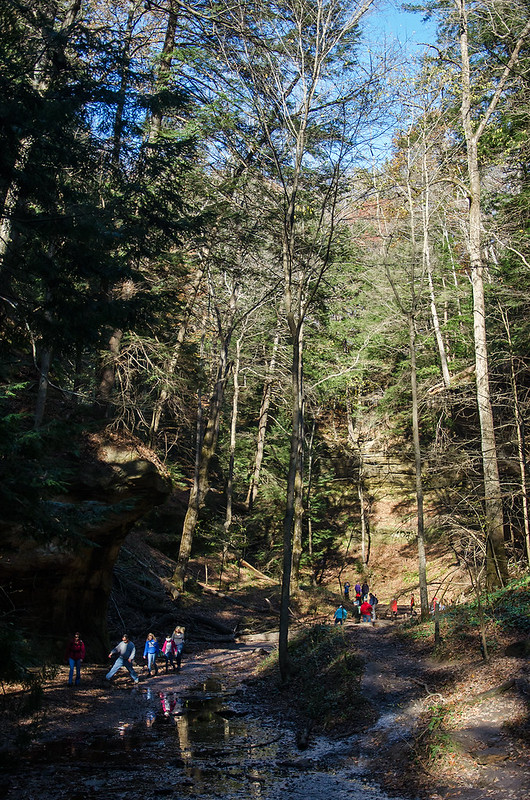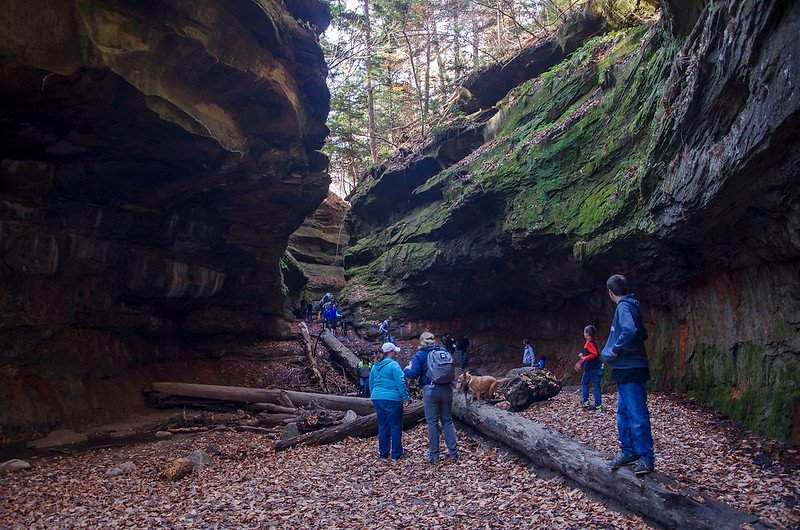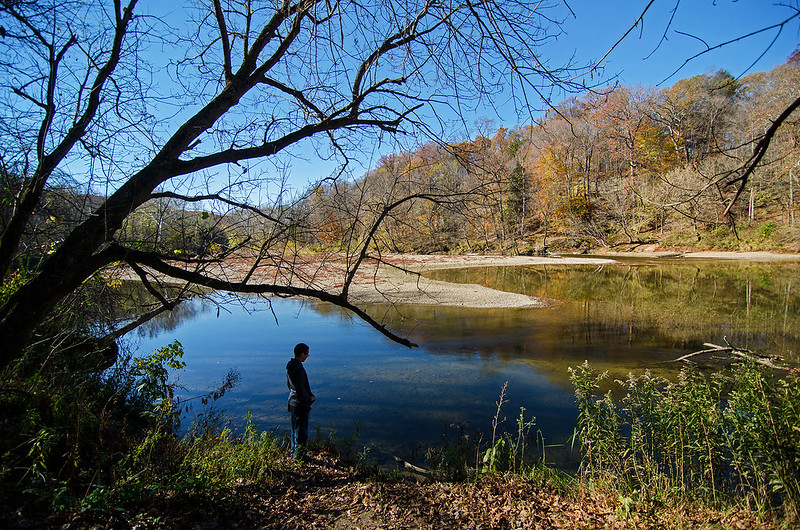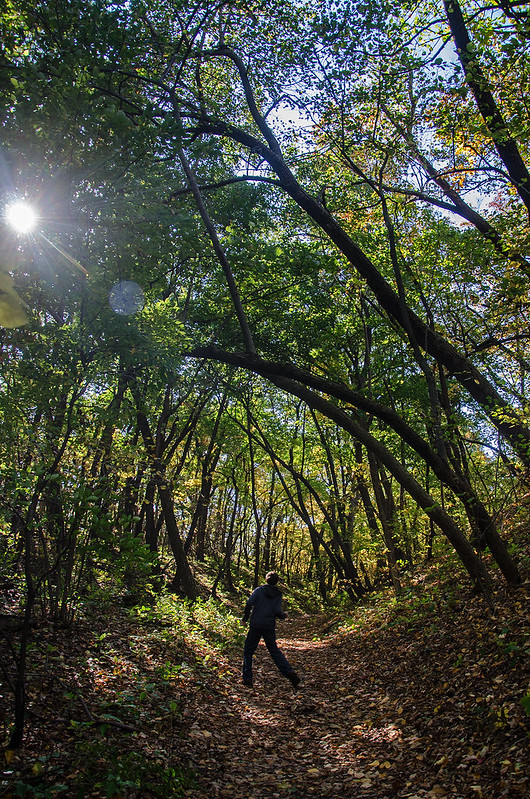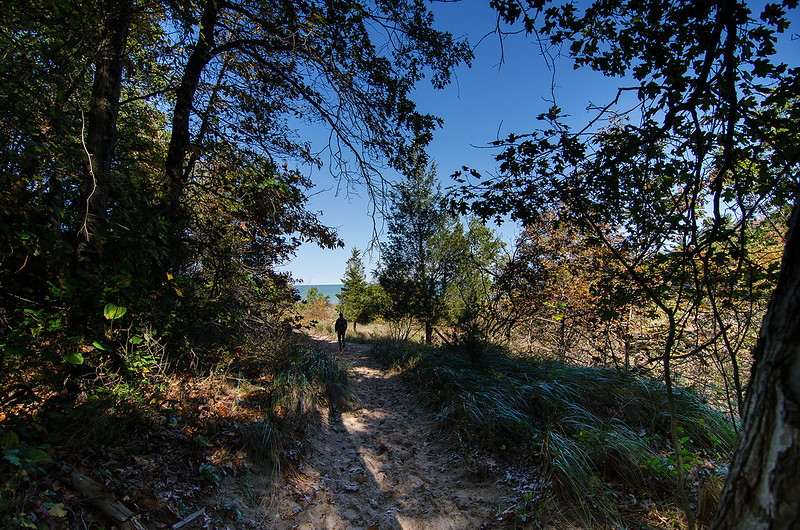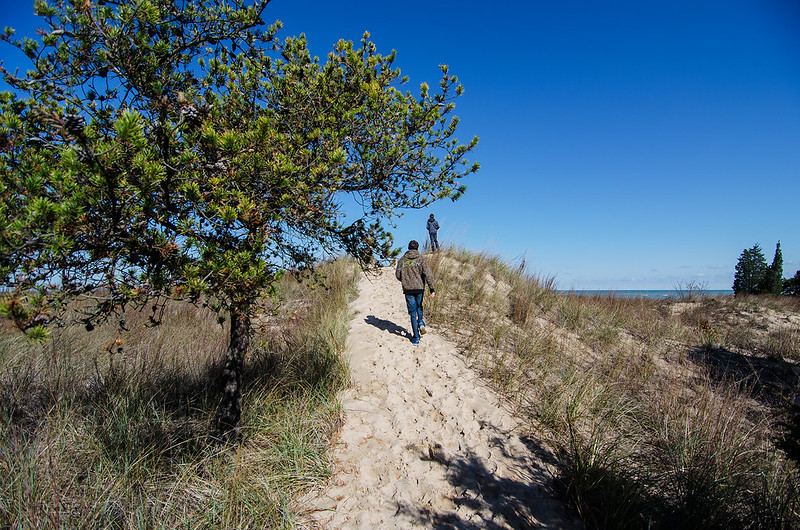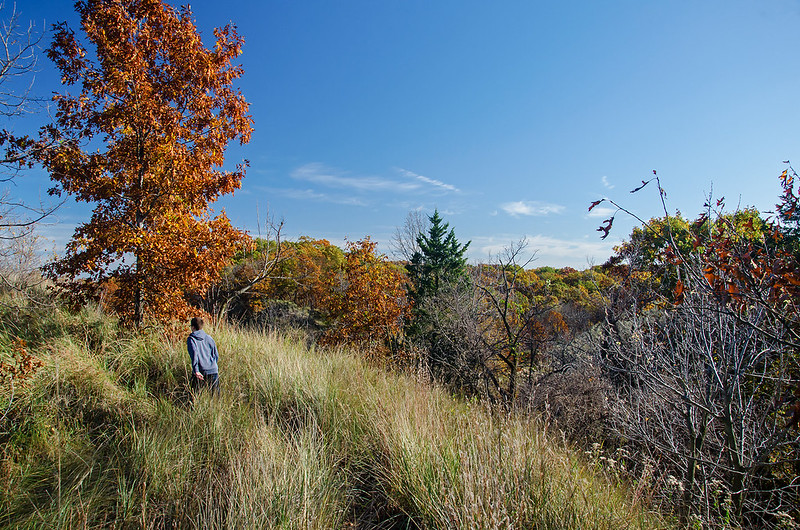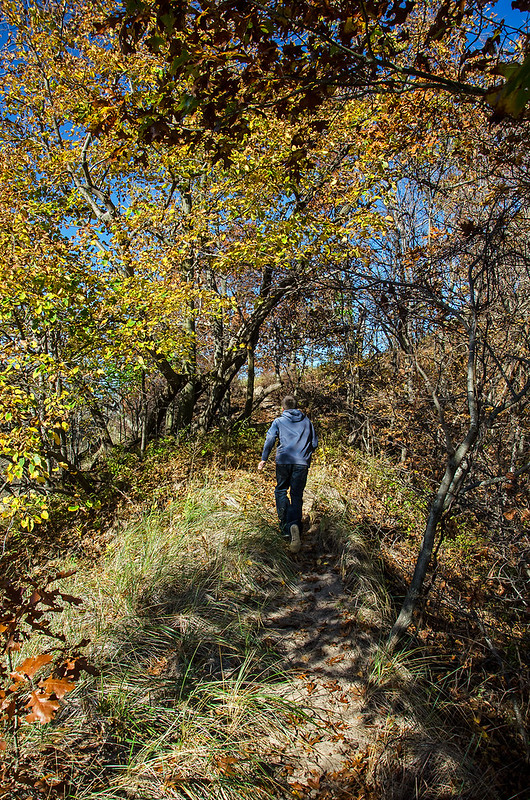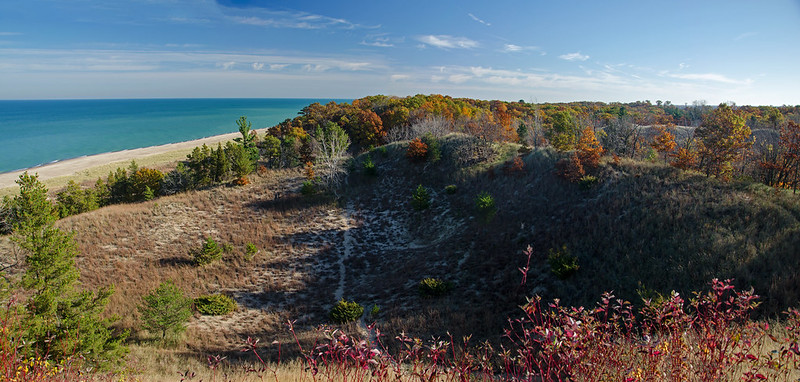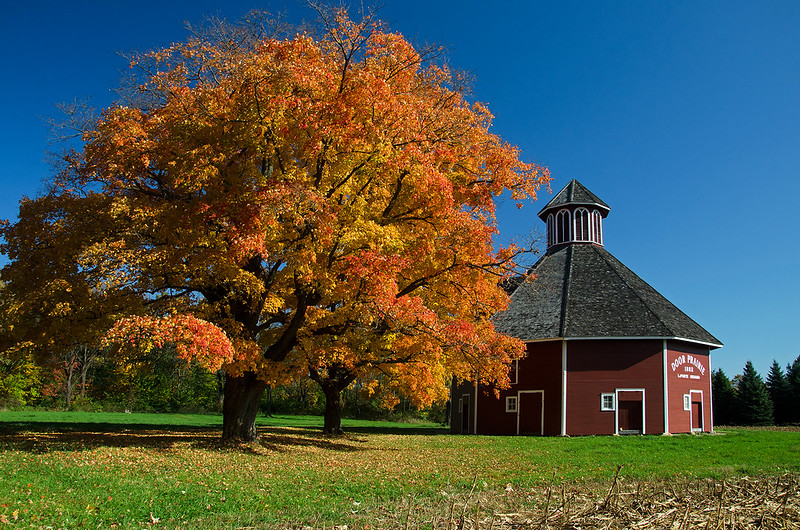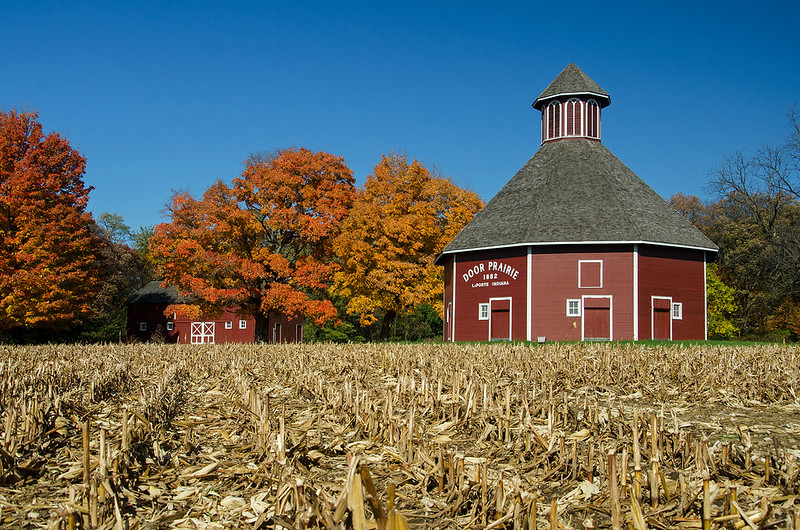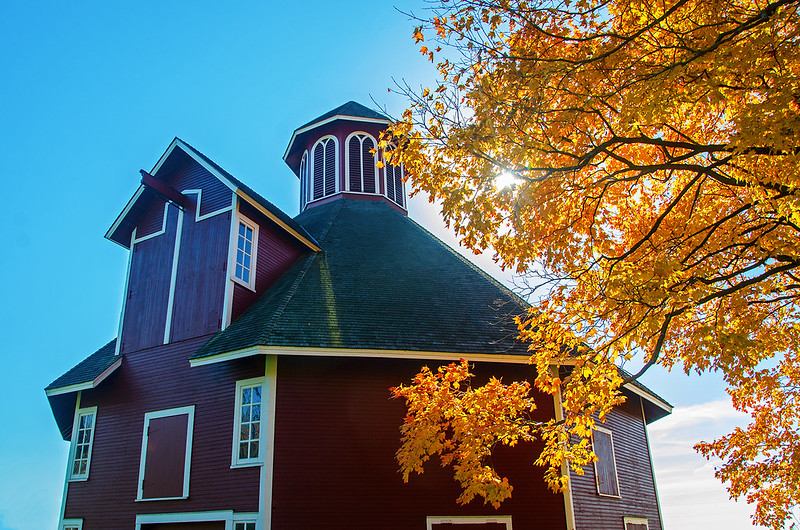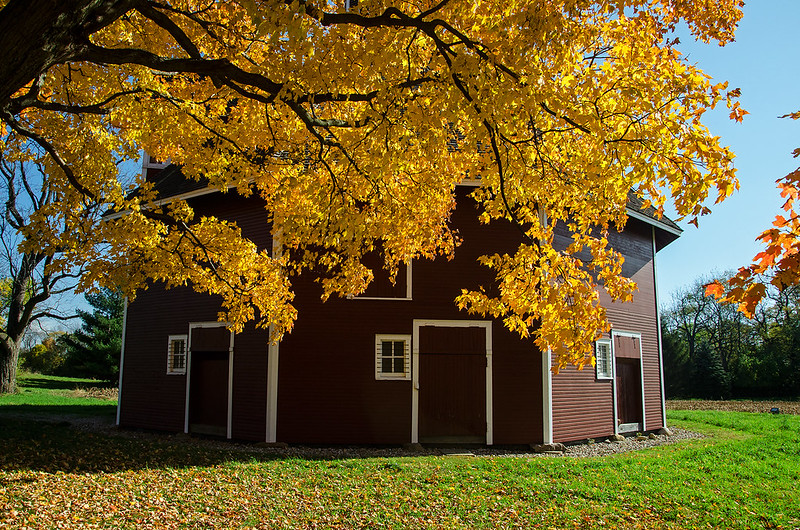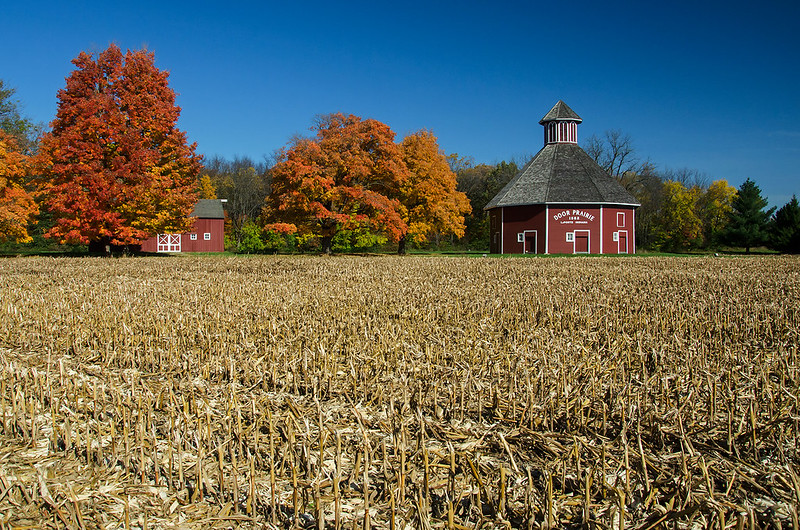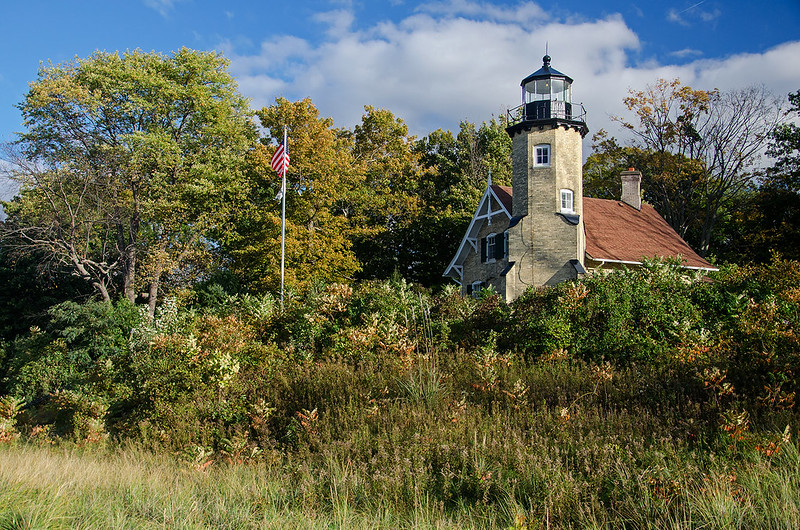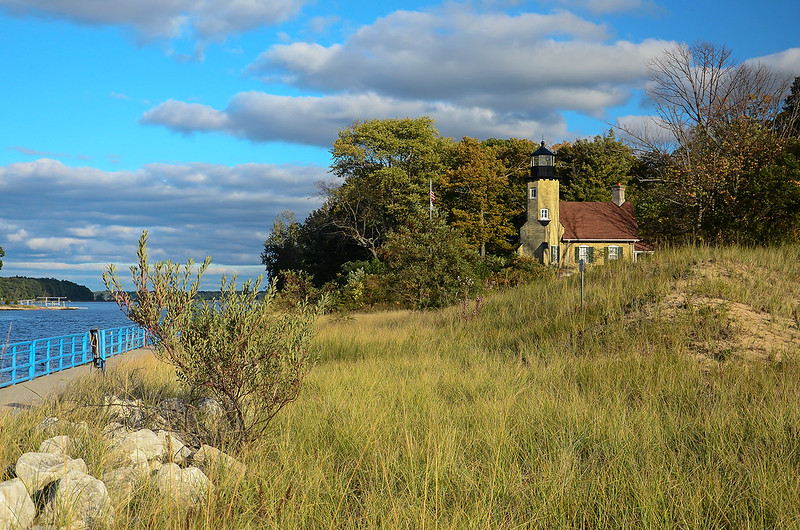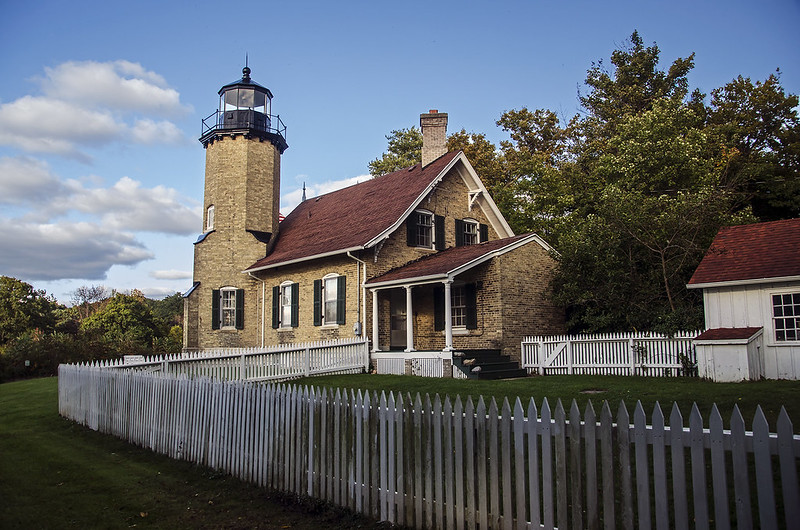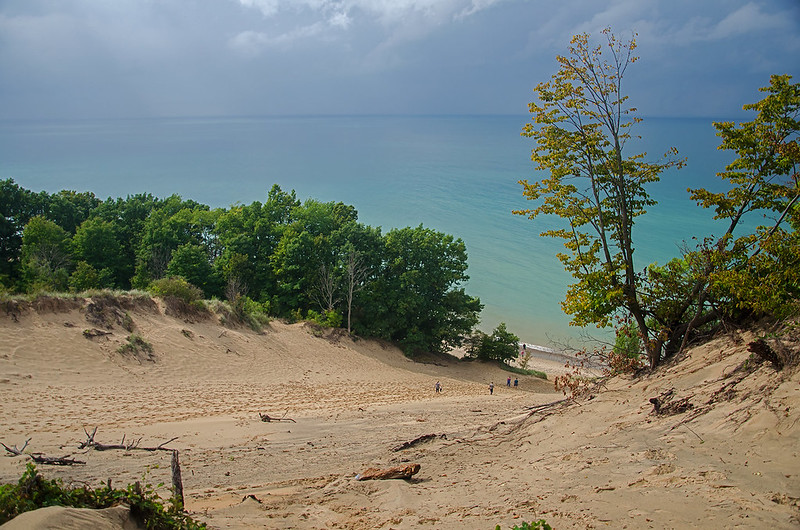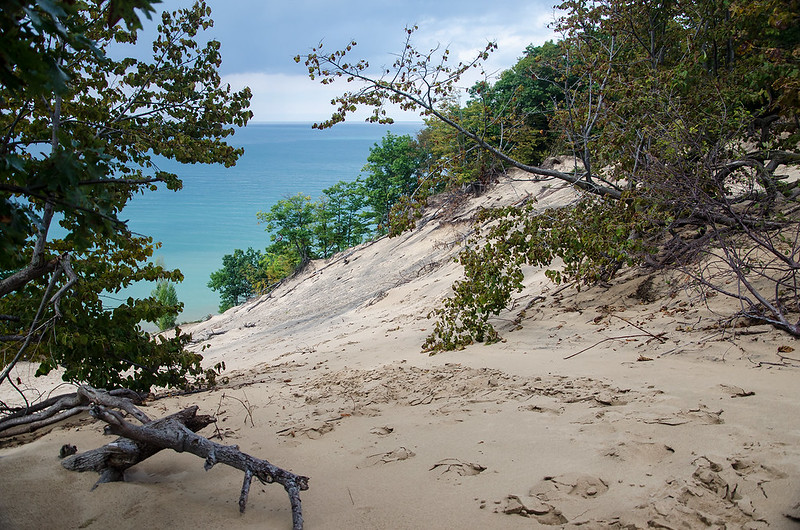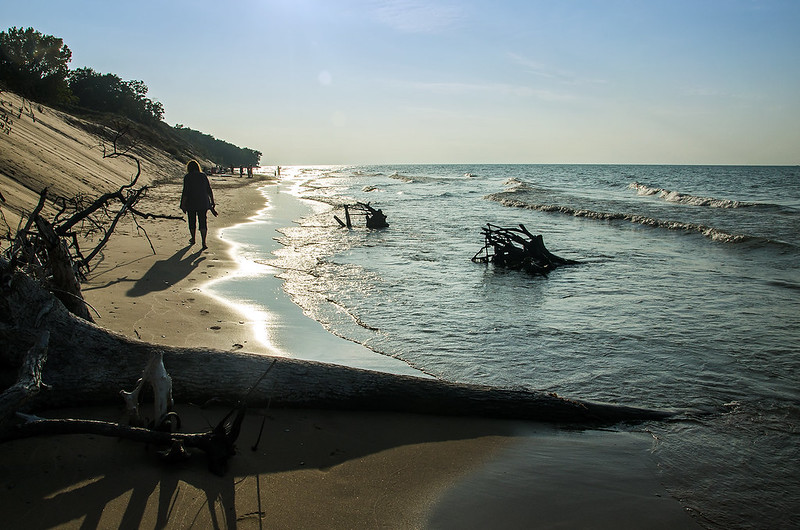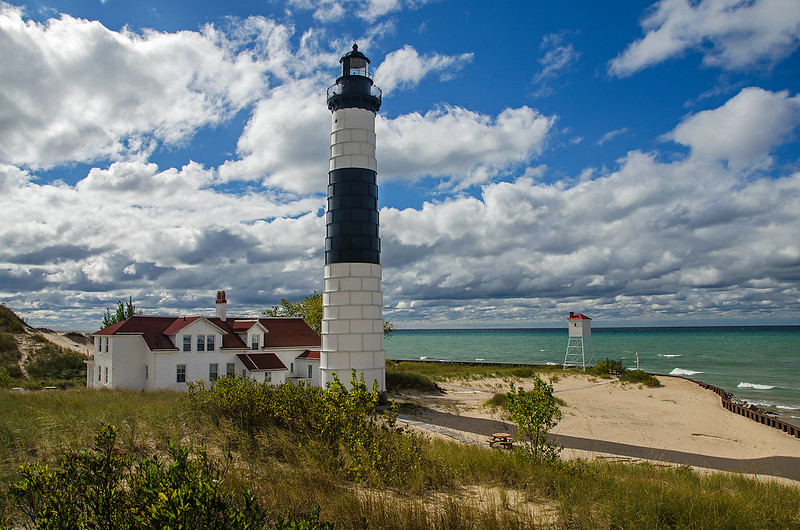
We began our hike on one of the coldest mornings so far this Fall. walking into the wind along the Lake Michigan shore. While it wasn't yet below freezing, it was bracing, especially after the four hour drive in the early morning. Two days of rain preceded us, so we hoped for a little sun, and we were in luck.
The walk from the parking area to the lighthouse is two miles long, measured on the crushed limestone path. We chose to walk along the beach, in soft sand, dodging waves, and with no protection from the wind. It certainly felt a bit longer than two miles, but we think getting there is a large part of the experience.
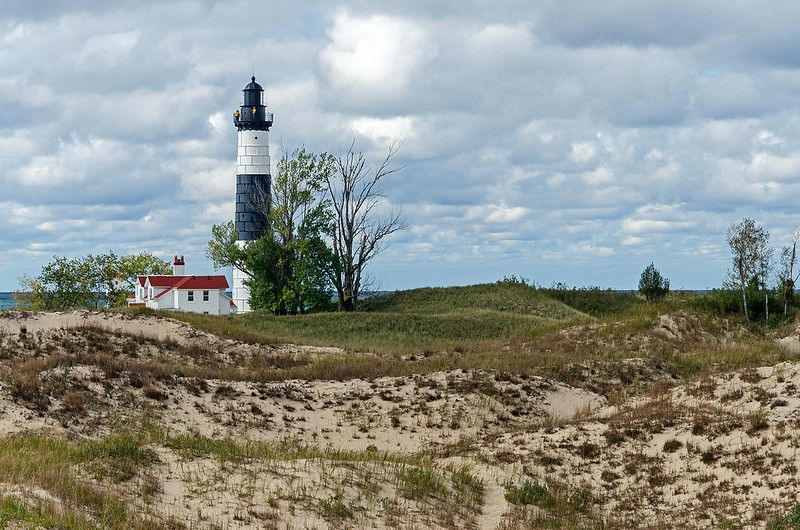
As we arrived at the lighthouse, the sun appeared more often as the dark clouds seemed to scatter a bit. To our surprise, this late in the season, the lighthouse was open to tours, so we climbed to the top to take in the view of the surrounding dunes of Ludington State Park.
From our vantage point, we could see dozens of interdunal ponds scattered throughout the landscape. We utilized the height to plot our course through the dunes, making certain we would explore the ponds, dunes, and conifer forests of the park. Here, as in many of the parks along the Michigan and Indiana shore of Lake Michigan, dune progression is clear. The change from beach to fore dune, to dune, to savanna to conifer forest, to oak forest can all be experienced in a relatively short hike.
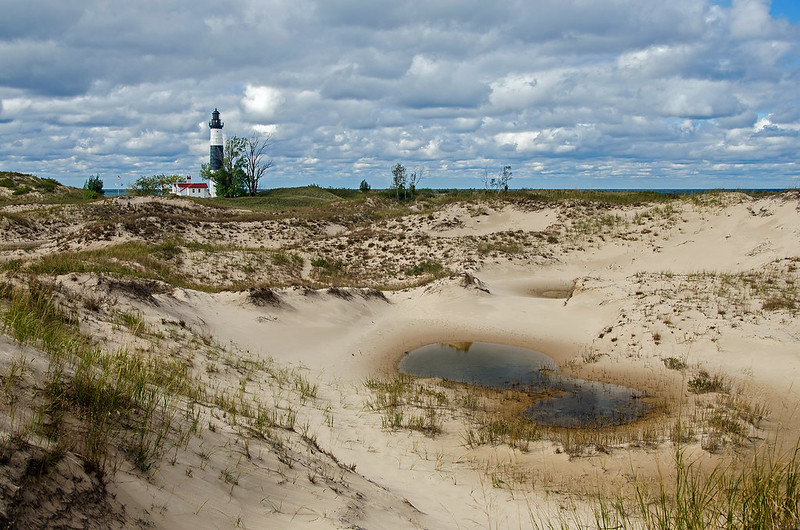
Of course, what could be a short 3 mile hike through the dunes and woods of Ludington State Park, turned into an exploration for us, as we spent about five hours enjoying the trails - without seeing another person. The volunteer at the lighthouse told us how wonderful the trails were, but she'd never gone too far from the lighthouse. It seems the visitors of this day simply wanted to get to and from the lighthouse, and not experience the best part of the park.
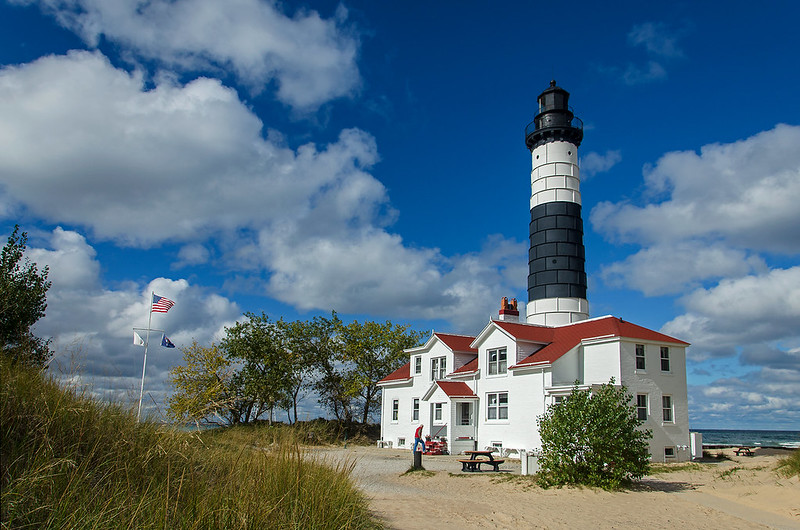
Built in 1876, Big Sable Point Light is one of the tallest lighthouses in the state of Michigan. There are 130 steps to the top, where two narrow hatches allow access to the lantern room. One can walk along the outside of the lantern for beautiful views of Lake Michigan and the dunes. The lighthouse received its steel cladding and black and white day markings in the early 1900's, when the bricks began to crumble.
